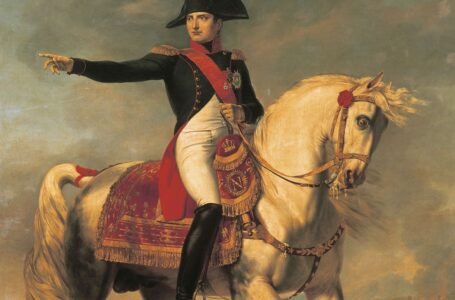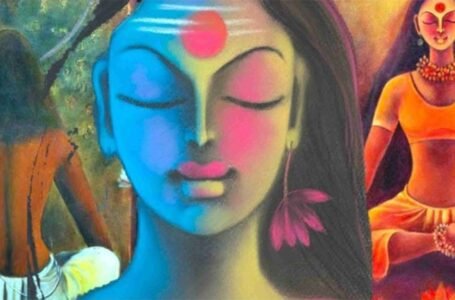Inquilab in Ink: Urdu Poetry and the Freedom Movement

“Sarfaroshi ki tamanna ab hamare dil mein hai, dekhna hai zor kitna baazu-e-qatil mein hai.” These famous words by Ram Prasad Bismil have resonated over generations, capturing the spirit of revolution for a people aspiring for freedom. Though most recall the military rebellions, satyagrahas, and political talks that characterized India’s independence movement, a more silent yet no less powerful revolution was unfolding in the form of inked poetry. Urdu poetry, with its lyricism, emotive power, and intensely politicized content, emerged as one of the most powerful weapons of resistance in colonial times. As a literary device, it provided voice to both hope and sorrow, rebellion and resilience. It filtered the unuttered agony of an oppressed race and at the same time energized courage and solidarity. For this reason, Urdu poetry wasn’t just a cultural phenomenon; it was an arm, a movement, and a reflection on the times.
The cultural heritage of Urdu during pre-independence India cannot be exaggerated. Borne out of the encounter between Persian, Arabic, Turkish, and local Indian dialects, Urdu developed into a language that was composite, lyrical, and democratic. It was spoken in courts, sung in streets, and read in revolutionary pamphlets. Contrary to the colonial discourse that tried to fragment Indian identities on communal lines, Urdu was a sign of composite culture. It was the language of Ghalib and Gandhi, of Mir Taqi Mir and Maulana Azad. Urdu poetry, particularly in the colonial period, crossed religious and geographical divides. It was adopted by Hindus and Muslims, by nationalists and revolutionaries, by ordinary citizens. Such shared possession of the language ensured that it became a unifying force in a nation divided under foreign occupation.
One of the earliest examples of poetic resistance in Urdu is traced to the Revolt of 1857, which the British historians generally referred to as a “mutiny” but was immortalized by Indian poets as the “First War of Independence.” Poets such as Bahadur Shah Zafar, the last of the Mughal emperors and himself a talented poet, articulated the pain of a dying empire and an imprisoned soul. His couplet “Lagta nahin hai dil mera ujde dayar mein” is not just an expression of individual grief but also the national despair of a nation besieged. While Zafar’s poetry lamented the loss of independence, it also had a hidden spark of resistance. This combination of melancholy and militancy was to become a characteristic of Urdu poetry in the decades to follow.
As the movement for freedom grew in the 20th century, Urdu poets started using a more aggressive and confrontational tone. The emergence of the Progressive Writers’ Movement in the 1930s was a major shift in Urdu literature. Established by authors such as Sajjad Zaheer and nurtured by giant figures such as Faiz Ahmed Faiz, Josh Malihabadi, and Makhdoom Mohiuddin, the movement sought to employ literature as a tool to oppose colonial domination, social injustice, and feudal exploitation. These poets felt that art should mirror life, and life in colonial India was not possible without struggle. Urdu poetry became the voice of the oppressed, the hungry, the enslaved, and the hopeful.
Faiz Ahmed Faiz, perhaps one of the greatest poets of resistance of the 20th century, added a depth and subtlety to revolutionary poetry that was unmatched. His poem “Bol ke lab azaad hain tere” (Speak, for your lips are free) is an impassioned call to free speech and resistance, challenging people to speak up even when faced with violent repression. Faiz’s genius was his power to entwine love and revolution into one line, so that his poetry is emotionally charged yet politically incisive. His employment of romantic metaphors to describe political desperation and opposition muddled the distinctions between individual yearning and common cause, making his work speak universally.
Yet another legendary personality, Josh Malihabadi, the “Shair-e-Inquilab” (Poet of Revolution), was much more blunt in his denunciation of British occupation. His poem “Haqeeqat-e-Inquilab” is a deafening denunciation of despotism and a clarion call to rise. Josh’s language was incandescent, his voice impassioned, and his message unyielding. Whereas Faiz stroked the soul, Josh hammered it like a mallet. Together, they were the two poles of the Freedom struggle’s energies—emotional depth and militant resistance.
Women poets were also central to the Urdu literary resistance, though they have been overshadowed by their male counterparts. Poets such as Ada Jafri and Ismat Chughtai, though more famous for their work post-independence, appeared during this period of upheaval and employed their pens to resist both colonial and patriarchal domination. Their work assisted in bringing about the foundations of a more progressive and expansive vision of freedom—one which acknowledged not just political independence, but also social liberation.
No discussion of Urdu poetry in relation to freedom can take place without the mention of the revolutionary war cry “Inquilab Zindabad,” which came to represent anti-colonial uprisings. Coined by Maulana Hasrat Mohani, a fiery poet and staunch nationalist, the phrase literally means “Long Live the Revolution.” Hasrat Mohani’s poetry was deeply nationalistic, but he also held strong socialist and Islamic ideals. He was among the few leaders who actively participated in the Congress as well as religious forums, emphasizing unity and secularism through his verse. His ghazals conveyed the messages of religious fervor and political rebelliousness equally, a true reflection of the multifaceted nature of colonial India.
While poetry was being recited during political rallies, in prisons, and public places, it was also being written in newspapers and magazines, typeset in pamphlets, and even copied out in hand-written diaries being circulated among revolutionaries. The oral form of Urdu poetry—mushairas and mehfils—guaranteed its popularity went beyond the educated elite to reach the common masses. These gatherings were not only poetic sessions; they were acts of political defiance, arenas in which the air itself seemed to pulse with revolt.
The strength of Urdu poetry was its immediacy and emotional accessibility. Its rhythmic elegance made it recallable; its themes made it pressing. It was simpler to recall a powerful couplet than a long political manifesto. This recallability enabled poems to be slogans, and slogans to be chants. When crowds cried out Inquilab Zindabad, they were not simply repeating a political slogan—they were calling out to a long literary heritage that had been transformed into an act of protest.
After independence, Urdu poetry struggled to find meaning in freedom. Poets were disillusioned with the failure of the new state to deliver on its promise. Faiz’s “Yeh daagh daagh ujala, yeh shab-gazeeda seher” laments the failure of the dream that so many had shed blood for. The partition of India, which politically and culturally relegated Urdu to the sidelines in most of India, added complexity to its legacy. Nevertheless, in spite of dwindling institutional support, Urdu poetry has survived in hearts, on stages, and now, on social media. Younger poets today still refer to the inquilab spirit, often using the writings of Faiz, Hasrat Mohani, and others in contemporary protests and movements.
The inheritance of Urdu poetry In the freedom struggle is therefore not stuck in the past. It is alive and ongoing. From anti-CAA protests to farmer marches, one can still catch snippets of ancient verses being used for new cause. The revolutionary ghazal, the rebellious nazm, and the lamenting marsiya continue to be relevant because the battle for justice, dignity, and equality continues. In so many ways, the history of Urdu poetry and Indian freedom is the history of language as freedom.
Another extraordinary aspect of Urdu poetry during the freedom struggle was that it could make ordinary people a part of participants of extraordinary movements. The ease of the language, combined with the emotional power of its verses, meant that even illiterate people found inspiration in oral couplets. Poetry was not limited to drawing rooms and intellectual salons—it flowed onto the streets, into prison cells, and onto village squares. The mushairas of the period were not merely cultural performances but venues of veiled political communication. Poets frequently employed metaphorical layers to criticize the British Raj without direct censorship, planting revolutionary connotations under romantic or mystical imagery. For instance, when a poet referred to zulm (oppression), ghulami (slavery), or azadi (freedom), the audience realized the coded allusion to colonial domination. This double language of protest and poetry turned Urdu verse into an essential medium of mass communication and resistance. In a time without social media or mass printing, these poems were oral manifestos, rallying cries, and pedagogical tools.
The poems and lyrics of the songs that were written during the movement tended to merge poetry and music. Artists and musicians translated poetic verses into patriotic anthems sung along the march routes and at demonstrations. These anthems added rhythm to the movement, pumping up tired bodies and rejuvenating exhausted spirits. Whether it was Bismil’s “Sarfaroshi ki tamanna” being circulated hand to hand on pieces of paper or Allama Iqbal’s “Tarana-e-Milli” providing hope through spiritual nationalism, Urdu poetry was a potent soundtrack to the resistance. Iqbal’s work, though complicated, is integral to this story. Although his subsequent poetry is controversially discussed in the backdrop of partition, his earlier pieces such as “Saare jahan se achha Hindustan hamara” were national anthems of pride and unity. His philosophy of khudi (selfhood) was based on individual strength, a message closely resonating with anti-colonial nationalism. Iqbal envisioned an awakened spiritually and culturally society that could take back its destiny from imperialism’s yoke. His lines resonated not merely in political meetings but also in schools and colleges, greatly impacting the minds of a generation.
The appeal of these poets and their lines extended far beyond independence. Even during India’s Emergency in the 1970s, students and activists invoked Faiz and Josh once more. In recent times, protestors on university campuses, citizen movements, and social justice causes have hoisted the flag of Urdu poetry again. Numbers such as “Hum dekhenge” by Faiz or “Kuch baat hai ke hasti mit’ti nahi hamari” by Iqbal assume new life with every utterance in rebellion. This continuous application of these pieces illustrates the strength of how the Urdu poetry that was born amidst the heat of the freedom struggle remains one of the strongest aspects of culture then. It does not only remind one—only re-lived, re-sung, and re-interpreted. So, the tale of inquilab in ink is not merely a historical narrative but a continuing chapter in India’s quest for justice, identity, and expression.
Finally, Urdu poetry was not a mere witness to history; it was an active participant in the creation of modern India. It provided rhythm to rebellion, elegance to sacrifice, and voice to the voiceless. With its metaphors and meters, it educated a country to hope, dream, and fight back. It is in remembrance of the martyrs of our freedom fighters that we must also pay tribute to those poets who, with no arms except ink and fire, etched an eternal niche for themselves in the nation’s soul. For in their poems, we discover not just the anguish of the past but also the beat of revolution that continues to pulsate—softly, obstinately, and forever.


